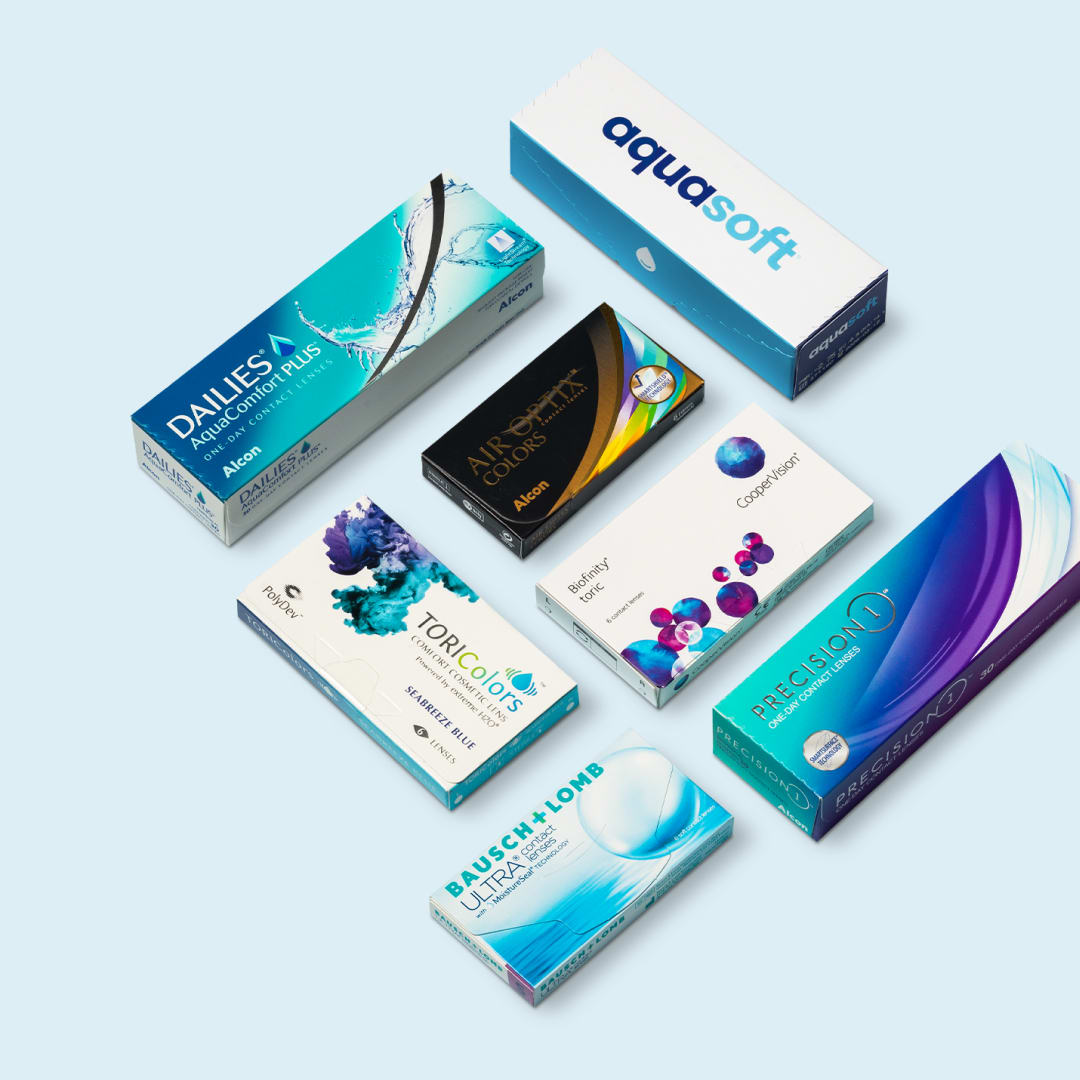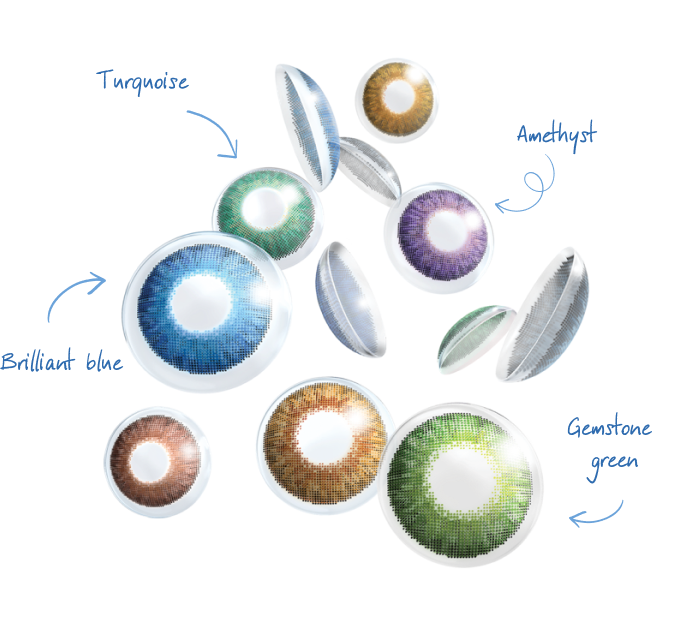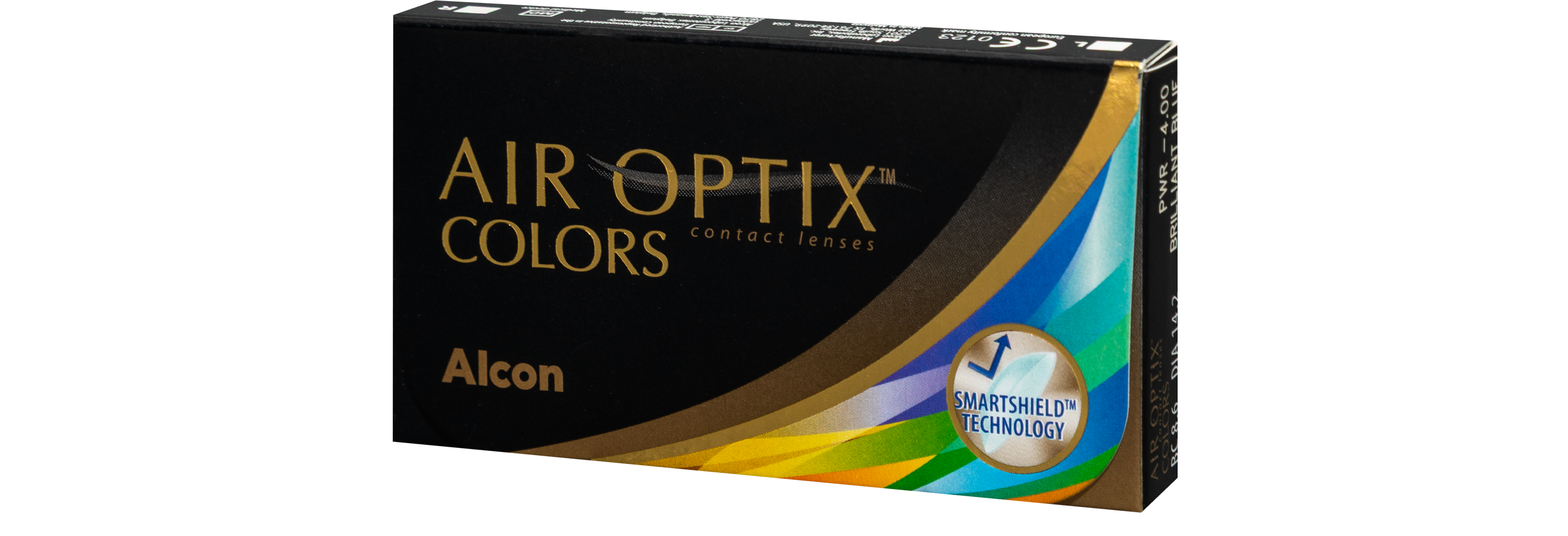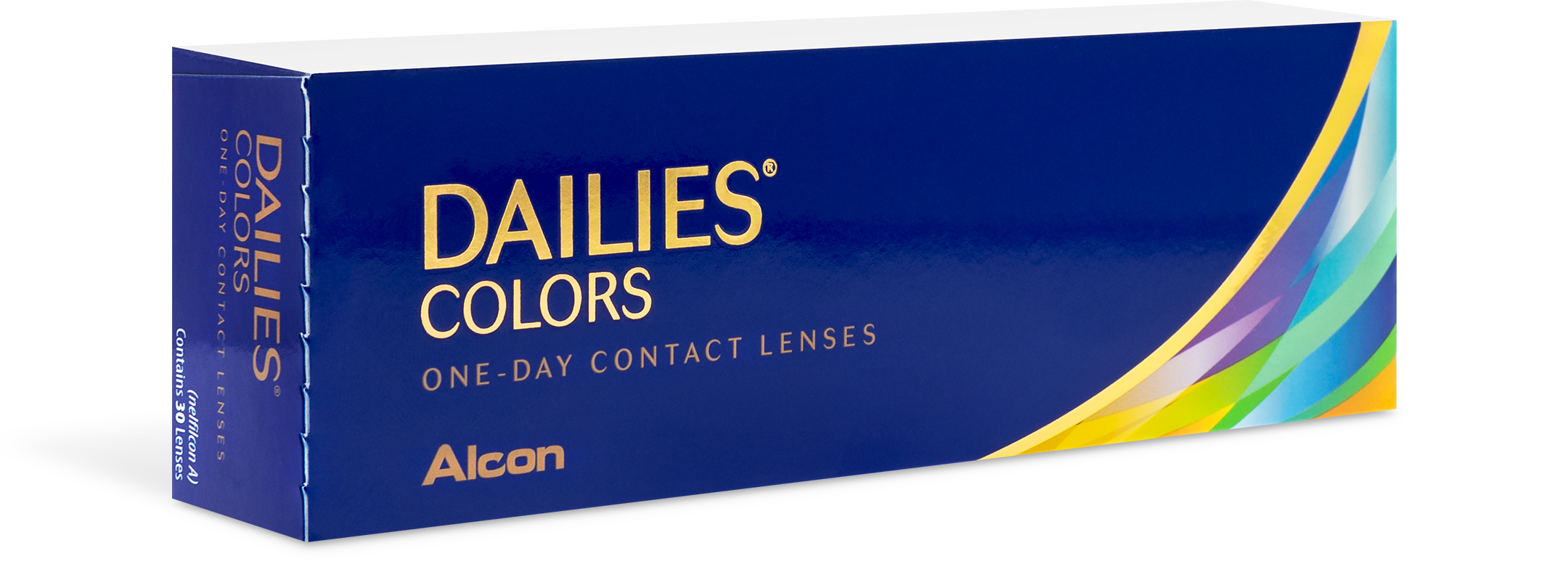Colored contact lenses
Have you ever woken up wishing you could change your appearance with a snap of your fingers? Now you can. Colored contact lenses alter your eye color, giving you the freedom to experiment with a new look every day of the week. Developed in the 1930s, these lenses come in prescription and nonprescription varieties.
Whether you want to match your eye color to your mood, transform your appearance before a theater performance, or channel your inner vampire at Halloween, here's what you need to know about colored contacts:
-
They're soft lenses.
-
Some lenses are opaque, allowing you to completely change your eye color.
-
Some lenses are designed to enhance your natural eye color rather than changing it.
-
They're safe to wear as long as you follow a few simple guidelines for cleaning and storing them.
In this article, we cover all things colored contact lenses, including their history, benefits, possible safety risks, and a list of the best brands.

Order Contact Lenses Online
Learn how to order contact lenses online at 1-800 Contacts
Order contacts
When were colored contacts invented?
In 1939, Henry Hull wore colored contacts in Miracles for Sale, an MGM film about a man who sells illusions to magicians. He was the first actor to do so, as colored contacts weren't even invented until one of the film's makeup artists approached a Beverly Hills ophthalmologist about the possibility of changing Hull's eye color. We won't spoil the ending, so let's just say the change in eye color is a major plot point in the film.
Since then, manufacturers have been producing colored contacts for theatrical and cosmetic purposes. It wasn't until the 1980s that colored lenses became widely available. Wesley Jessen introduced the dot-matrix design in 1986, which replaced a solid block of color with tiny dots. These dots helped the colored lens blend naturally with the wearer's natural eye color.
Eventually, manufacturers incorporated advanced materials into their colored lens designs. These materials make colored contacts more comfortable. Today, colored contact lenses come in various styles and colors, giving you the freedom to change your eye color whenever the mood strikes.
Is it safe to put in colored contacts?
Colored contacts, just like other types of contact lenses, are classified as medical devices. Reputable manufacturers must follow stringent safety and quality guidelines when developing these products. As long as you follow best practices for using colored contacts, they're just as safe as traditional contacts.
One way to minimize the risk of safety issues is to learn how to insert colored contacts properly.

How to put in colored contacts for the first time
The process of inserting colored contact lenses has just three steps: Get ready, examine the first contact to make sure it's in the right position, and insert the contact into your eye. Repeat with the other contact, and you're ready to go!
Feeling squeamish? Just gather up your courage and give it a shot. Here's some more guidance to make the process easy.
1. Get ready
If you were going to run a marathon, you wouldn't avoid all the training and show up at the starting line expecting to set a record, would you? Likewise, you shouldn't try to insert a contact lens without a little preparation.
Start by washing your hands. No matter how neat you are, it's easy to pick up dirt and bacteria when you touch shared surfaces. You need clean hands to prevent grime from getting into your eyes.
Next, stand in front of a mirror. If there's a sink nearby, put a towel over it to prevent your lenses from swirling down the drain if you drop them. Make sure you have plenty of light.
2. Examine the contact
Pick up a contact and make sure it's right-side out. Some lenses have laser markings to indicate the correct position. Before you insert the lens, make sure it doesn't have any damage, such as tears or holes.
3. Insert the contact
Now you're ready to rock. Place the lens on the tip of your index finger, pull down your eyelid (gently!), and insert the lens while you look up at a slight angle. Don't worry if they feel funny at first. It can take up to 2 weeks to adjust to contacts.
Are colored contacts safe for 12-year-olds?
Yes, colored lenses are safe for 12-year-olds, as long as they're used correctly. There's no age restriction on colored contacts, but a child should be mature enough to wash their hands properly, avoid touching their eyes, and follow the manufacturer's guidelines regarding lens storage and handling.
It also depends on how often your child wants to wear colored contacts. If they want to use them once a year on Halloween, go wild. A child who needs lenses for vision correction needs to care for their contacts day in and day out. Let's put it this way: If your child loses their phone every 20 minutes, they should probably stick with glasses for now.
Remember, there are some best practices to reduce discomfort and help wearers avoid adverse effects. They include keeping the lenses clean, following good hygiene practices, and wearing them only for the recommended time.
Is it OK to sleep with colored contacts?
You shouldn't sleep with colored contacts unless your lenses were made specifically for extended wear. Sleeping in other types of contacts can leave your eyes feeling as dry as the Sahara. If you have extended-wear lenses, remove them for a few hours per week to give your eyes a much-needed rest. Otherwise, avoid discomfort by following the manufacturer's recommendations.
Do colored contacts obstruct vision?
Colored contact lenses don't usually obstruct your vision, but it can happen. These lenses typically have a clear center, allowing you to see clearly while trying out a new eye color. When your pupils dilate, however, they may expand beyond the borders of this clear center. If the tinted portion of a contact covers part of your pupil, you may experience blurry vision.
You can avoid this problem by choosing lenses from reputable manufacturers and making sure your contacts fit properly.
Can you get prescription colored contacts?
Absolutely! You just need to know your prescription first. Colored contacts are so popular that you can get them for nearsightedness, farsightedness, or even astigmatism (an abnormal curvature of the eye that causes things to look out of focus).
If you've never worn glasses or contacts, you need an in-person eye exam. If you've used corrective lenses before, you can get a colored contacts prescription by completing an online vision exam. These are a few of the high-quality colored contacts available on our website:
What is the best brand of colored contacts?
The best brand of colored contacts depends on your needs and preferences. If you have astigmatism, you need lenses with different curves to account for the abnormal curvature of your eyes. Some people want to change their eye color, while others want to enhance their natural eye color.
Best colored contacts for brown eyes
Eyedia clearcolor Vibrant lenses are our top pick for people with brown eyes. They come in seven bold hues, from ice blue to lavender — one for every day of the week! Eyedia uses medical-grade dyes, so the color doesn't disappear when you place the lenses over your deep-brown irises.

Order Contact Lenses Online
Learn how to order contact lenses online at 1-800 Contacts
Order contacts
Best color-enhancing lenses
If you want to enhance your eyes, try 1-DAY ACUVUE DEFINE lenses. They have iris-inspired designs to blend with your natural eye color instead of obscuring it. 1-DAY ACUVUE DEFINE contacts also have Natural Shimmer™ and Natural Sparkle™ to brighten your irises and add dimension.
Best colored contacts for dry eyes
DAILIES COLORS come in four vibrant colors, but they also have AquaComfort Plus® technology to keep your eyes moist all day long. In fact, these colored lenses have a water content of 69%, helping to make dry eye a thing of the past.
Advantages and disadvantages of colored contacts
The biggest advantage of colored contacts is that you can change your look without sacrificing your ability to see clearly. Many colored lenses also have additional features, such as advanced moisture technology, to enhance your comfort.
There aren't major drawbacks to using colored contacts as long as you follow the manufacturer's recommendations. However, you may want to avoid buying colored contacts for young children — at least until they're old enough to take care of the tiny lenses properly.
You can avoid discomfort by handling your contacts carefully, making sure they're right-side up when you insert them, and getting regular eye exams to ensure you always have the right prescription for your vision needs.
If you already wear glasses or contacts, you can even renew your prescription by getting an online vision exam. When you're ready to order lenses, visit 1-800 Contacts to find your preferred brand and style.
Did you know you can order contacts online?
Say goodbye to trips to the eye doctor and hello to convenience! With 1-800 Contacts, you can easily order your contact lenses online and have them delivered straight to your door. Plus, our online vision exam makes it simple to get the prescription you need without leaving home. And the best part? You’ll save money on your first order with 1-800 Contacts. It’s never been easier to get your contacts!
Original publish date: 1/23/2020
Updated date: 7/18/2025







